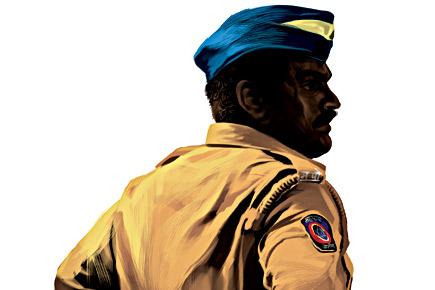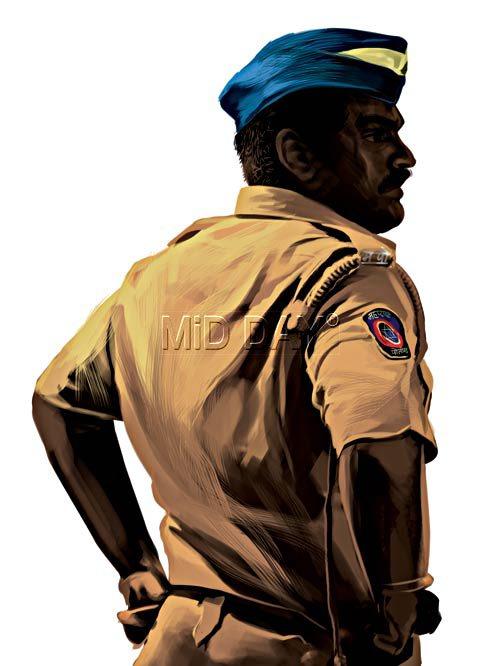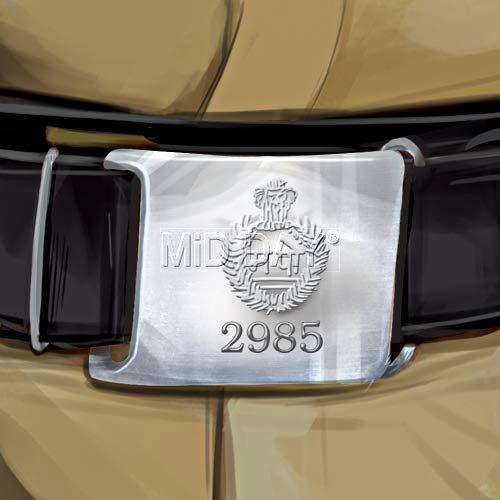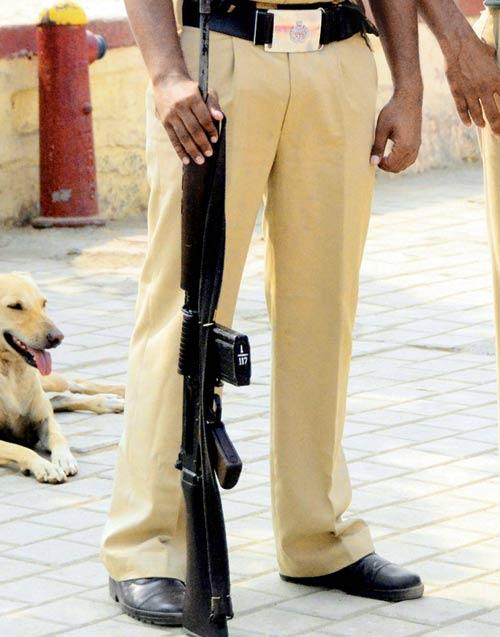According to Mumbai Police records, the constable said to have accompanied Salman Khan for blood alcohol test in JJ Hospital in September 2002 had already retired in 1998

Mumbai police
The constable who the police claim accompanied actor Salman Khan for the blood alcohol test after the hit-and-run accident in September 2002 had retired in 1998, according to police master records accessed by mid-day on Friday.
ADVERTISEMENT

Key questions: Through the trial, he was identified only as (below) 'Constable with buckle number 2985.' mid-day can reveal his name is Shivaji Sawant, and he retired in 1998. Illustrations/Uday Mohite
Known throughout the trial only as the “constable with buckle number 2985”, police records identify the constable as Shivaji Shankar Sawant.

His last posting was Bhoiwada police station where he retired with the rank of assistant sub-inspector. As per records, Sawant joined Mumbai police on August 7, 1960, and retired on June 30, 1998, a full four years before the time he is said to have accompanied Khan for a blood test at JJ Hospital.
According to the police, this is the constable who had accompanied Khan from Bandra police station to the hospital for a medical examination and blood alcohol test. He is also said to have brought the samples back from the hospital to the Bandra police station.

Pic for representation
The Bombay High Court on Thursday acquitted Khan of all charges. Constable 2985 was one of the witnesses who the trial court wanted examined. But the police could not locate him and presented police sub inspector Salunkhe who was the supervisory officer of constable 2985.
That the constable who allegedly accompanied Khan could not be called for questioning was one of the major points that went against the prosecution during the appeal in the high court.
Khan’s advocate Amit Desai’s submission to the high court in the first week of December mentions that the blood test and the chain of custody of the actor’s blood sample had breaks in its collection, sealing and delivery that violate all rules. Desai had also questioned how the constable remained untraceable for so long.
Never deposed
While the prosecutor in the trial court — Pradeep Gharat — filed an application in the sessions court in February 2015 saying the police could not trace the constable, several police officers subsequently took the line that the constable was not important to the trial.
An officer involved in the investigation told mid-day, “We don’t think the constable was important and we tried to locate him but he was not traceable and we did not want to waste time. Therefore we put up the PSI to depose before the court.”
Now, questions are being raised about whether the police knew all along of this silly goof-up and tried to cover it up saying the constable was not traceable.
The police department maintains records of all its men with the Kaksh Section, also known as Section 9 in the commissioner’s office. When buckle number 2985 was entered in the system on Friday, the database showed that the constable Sawant had retired in 1998.
“All the police personnel get unique buckle numbers by which they are identified,” said an officer. “Further, the buckle which has the number engraved is returned to the department once retired. The same buckle is never given to another policeman. Also, policemen retire at the age of 58. Under no circumstance is anyone’s service extended. One has to retire at this age.”
In February 2015, when the case was going on at the Sessions court, sub-inspector Vijay Salunkhe, who was heading the team that went to collect Salman’s blood samples, deposed.
When mid-day contacted Salunkhe, who is currently an Assistant Police Inspector in the Protection Branch, he said, “It is almost a decade-old case. I don’t remember who collected the sample. There were several policemen in my team.”
Interestingly, even during the earlier trial at the Bandra magistrate court for rash and negligent driving, the constable did not depose as witness and it was Salunkhe who deposed.
 Subscribe today by clicking the link and stay updated with the latest news!" Click here!
Subscribe today by clicking the link and stay updated with the latest news!" Click here!






